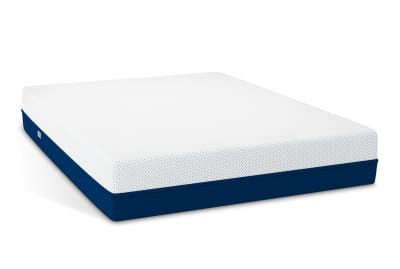What Is A Memory Foam Mattress?
Memory foam or “viscoelastic” mattresses are made of a polymer called polyurethane. The foam was originally developed by NASA and has since found its way into millions of homes around the world.
Memory foam is typically very dense, which makes it excellent in terms of overall comfort and support leading to pressure relief. Density can vary from mattress to mattress based on the polyurethane blend and additional materials used by each manufacturer. This can affect properties like the body contouring, responsiveness and breathability of the bed.
Pros
They have a very unique feel where they really hug your body. This makes them great at relieving pressure and eliminating much of the pressure-point-related pain that many sleepers experience.
That hugging feeling also makes memory foam exceptional at isolating motion. If you or your partner tend to move around a lot in bed, that movement will not transfer through memory foam to disrupt anyone’s sleep.
Cons
Many sleepers report that this mattress type retains too much heat, which can be a drawback for some. But there are some memory foam mattresses on the market that perform better in this category with cooling features that allow for more breathability.
It is also your body heat that they harness to allow them to conform so well and relieve pressure. So this heat retention could be considered a benefit.
Memory foam mattresses can be very heavy and difficult to move as a result. There can also be significant off-gassing, but with quality beds of this type, any smell should dissipate within a few days.
Memory Foam Mattress vs. Latex
There are many similarities between memory foam and latex mattresses. Both mattress types provide support and comfort which gives that hugging, sink-in feeling that so many sleepers love, but memory foam even more so than latex. Memory foam mattresses will conform much more closely to the shape of your body, which makes for a very enveloping feel. Perhaps too enveloping for some sleepers, depending on the comfort/firmness level of the bed.
Memory foam mattresses generally sleep significantly hotter than the latex variety. They tend to retain heat, which can either be a plus or a deterrent depending on your sleep needs.
Another notable difference is that memory foam beds have much slower response than latex. Again this makes them great in terms of huggability, pressure relief and motion isolation, but not so great for couples who like the bounce and responsiveness that can be great for sex.
Both memory foam and latex mattresses also give off very little noise, and are very durable.
Is A Memory Foam Mattress Right For Me?
If you like the feeling of sinking into your bed, a memory foam mattress is probably right for you. They will really hug and contour to your body more so than latex and innerspring, which makes them especially great for side sleepers.
As with innerspring mattresses, you’ll find a lot of variety when it comes to the materials used in the layers of memory foam beds and consequently the degree of firmness, breathability, responsiveness, etc. This means you’re more likely to find a bed that is well-suited to your individual needs.
If you’re naturally a cool sleeper, the fact that memory foam mattresses tend to sleep hot shouldn’t bother you at all. If you sleep hot already, you’ll have to be sure you get an aerated, less dense bed if you choose to go with memory foam.
We recommend Contour5. It’s a high-quality luxury memory foam at a price that’s 70% less than the popular Tempur-Pedic. You’ll get everything you love about memory foam in an eco-friendly package. And its Dual Layer Breathable Support and cooling gel layer defy the heat retention that makes many memory foams unfavorable.











